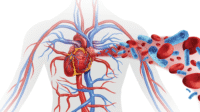Consider adding this therapy to your nursing care toolbox.
- To combat the opioid epidemic, ANA encourages alternative approaches to treating pain, such as increasing prescriber training, improving access to treatment, and exploring other pain management options.
- A growing body of evidence suggests the effectiveness of hypnosis for a variety of conditions and symptoms, including depression, anxiety, side effects of cancer and its treatment, and chronic pain.
- Hypnotherapists, most of whom are healthcare professionals (such as nurses, physicians, and psychologists), offer services in pain and sleep clinics as well as in private practice.
- Nurses interested in becoming hypnotherapists should seek training from a program approved by a professional organization.
Pain is the most common reason Americans seek an appointment with a provider. A study by Milling and colleagues shows how pain, in addition to causing a health crisis, also creates an economic crisis that costs approximately $560 to $630 billion dollars annually and affects about 20% of the population. In the mid-1990s, many believed oxycodone (a synthetic opioid) to be a great advancement in pain management—until the first wave of deaths from prescription drug overdoses occurred. According to the Centers for Disease Control and Prevention, over 75% of overdose deaths in 2022 involved an opioid.
Virtual reality: Treating pain and anxiety
Assessing the seven dimensions of pain
To combat the opioid epidemic, the American Nurses Association encourages alternative approaches to treating pain, such as increasing prescriber training, improving access to treatment, and exploring other pain management options.
Various complementary therapies (including acupuncture, massage, meditation, mindfulness, biofeedback, yoga, and hypnosis) provide effective, evidenced-based pain management. Having several pain management options in your nursing care toolbox can help alleviate patient suffering without subsequent complications.
A growing body of evidence suggests the effectiveness of hypnosis for stress management, depression, anxiety, post-traumatic stress disorder, the side effects of cancer and its treatment, irritable bowel syndrome, labor, chronic pain, neuropathy, and other conditions. Nurses who receive training and certification in hypnosis can provide these options to their patients.
Hypnosis defined
Hypnosis uses relaxation and visualization to guide the patient into a trance state that slows vital signs and prompts the brain to produce alpha and theta waves. This state makes the brain more receptive to suggestions for change. It also leads to more focus and creativity and reduces distraction. The patient feels relaxed, which helps to remove the flight-or-fight inflammatory response and its associated stress.
Hypnosis can improve opportunities for learning, personal insight, and self-growth. When the conscious working part of the mind quiets, an impetus for change emerges, which the patient can more easily access at an unconscious level. In this quiet place, no overt analysis, distraction, or anxiety occurs.
Freud categorized the mind as preconscious (anything that can be thought about consciously), conscious (thinking, memories, feelings), and the unconscious (feelings, urges, thoughts we’re not aware of). Knafo and Weinberger describe unconscious thought as including habits, emotions, trauma, beliefs, and automatic behaviors. The unconscious influences behavior, even if the person isn’t consciously aware. During hypnosis, a person can experience a shift in the unconscious and personal insight, which provides an opportunity to change behavior.
With hypnosis, patients discover meaning, find solutions, and reduce anxiety and fear related to pain, which aids in management. Hypervigilance and anticipatory anxiety frequently accompany chronic pain, which can add to the pain experience. In hypnosis, a sense of control replaces the helplessness of pain, and feelings of acceptance and empowerment result. Hypnosis also addresses the pain directly by suggesting an analgesic effect. When the patient experiences pain, they practice imagery visualization or focus on pleasant sensations (like warmth), which help break the cycle of pain, stress, and anxiety. (See Hypnosis history.)
Hypnosis history
Hypnosis as a form of pain management has been studied rigorously for centuries. Evidence indicates that a Chinese physician named Wong practiced hypnosis as early as 2600 BCE. Hieroglyphics in Egyptian tombs document its practice in ancient Egypt and Greece. Reports of a “trance state” have been noted in various cultures and religions. The Hindu religion used hypnosis, and Indian practices of hypnosis can be traced back to 1500 to 500 BCE.
Several physicians have practiced hypnosis more recently. The Austrian physician, Franz Anton Mesmer (1734–1815) used hypnosis in psychotherapy. Mesmer, who some describe as the father of hypnosis, called the practice “mesmerism.” In the 1840s, a Scottish surgeon, James Braid, renamed the practice hypnosis because it induced a state of sleep, which he called a trance. Sigmund Freud practiced hypnosis with his patients to process suppressed memories of trauma.
Milton Erickson (1901–1980) normalized the use of hypnosis in western medicine; in 1958, the American Medical Association accepted the practice. As the popularity of psychiatric medications grew, the practice of hypnosis began to diminish. Hypnosis practice is now known as hypnotherapy.
The brain and its waves


Alpha or theta waves and the border between the transition indicate effective hypnosis. The person can respond and they’re conscious of their surroundings, but they can focus and create healing visualization.
Delta waves develop in deep sleep, deep hypnosis, or deep meditation. The patient becomes disconnected and unaware of their surroundings. During this very healing stage of sleep, the immune system works to balance health. Very fast gamma waves are associated with insight, problem solving, and high levels of creativity.
A patient with chronic pain experiences all of these brain waves. Currently, we can only measure pain subjectively; however, a 2023 study by Valentini and colleagues found that patients experienced slowed alpha when in pain. (See Brain waves.)
The experience of hypnosis
Hypnosis begins with establishing rapport. The patient and therapist discuss safe places and images, and the patient describes how they want to feel after the session. The session then moves to induction, which includes guided imagery and relaxation exercises such as deep slow breathing and scanning the body.
When the patient enters a light state of hypnosis, the therapist gently moves them to a deeper state using agreed-upon imagery. Once in a deep trance, the patient will have rapid eye movement and slow speech when answering questions or describing their experience. At this point, the therapist provides suggestions to help guide the patient toward how they want to feel.
For example, if a patient describes their rheumatoid arthritis pain as hot and tight, the image might be one of sitting on a beautiful mountain surrounded by snow with a light breeze that cools and loosens the painful joints. The therapist reinforces these images with details that engage all five senses: “Focus on the smell of the snow, sharp and crisp. [The therapist pauses to allow the image to form.] The light is bright and reflecting the sun off the snow, and you have to squint. Birds call as they fly high overhead. In your hands is a cup of cocoa. Allow the smell of rich chocolate to reach you. The taste of cocoa on your lips is silky and comforting. The cool snow holds you and cools any discomfort.” The therapist reminds the patient that they can call on these images on their own for relief and insight.
Hypnosis addresses thoughts, beliefs, and symptoms. Pain can lead to feeling helpless, which adds to the negative experience. Hypnosis helps to reinforce confidence and a sense of control. The therapist might say, “As you breathe in, you can feel increased control over your pain. You feel confident, and your posture changes as confidence bursts out of your body.” The therapist also offers any other agreed-upon suggestions or plans for how to address pain directly. For example, the therapist might say, “Next time the pain in your knee begins, you’ll take in a slow cool breath, focus, and feel snow being packed around your knee.” The therapist also places suggestions for future success, such as, “When you try to get to this place again, you’ll find it gets easier and easier each time you practice. This tool will allow you to reduce pain.”
Next, the therapist brings the patient gently back to an outside focus. The therapist reminds the patient that this sense of calm and success will stay with them and tells them that they’ll be alert and energized with all the conscious memories of the hypnosis experience that they need. Patients almost always report a sense of time jumble, thinking that they were under for a couple of minutes, but realize that 20 minutes (or more) have passed. To allow time to become fully awake, patients should delay leaving the session for about 10 minutes.
Therapists use the post-hypnosis discussion to reinforce the plan and help patients process their experience. Patients experiencing hypnosis for the first time may want to discuss the wonder of it. Sometimes they discover earlier traumas linked to their perception of pain, which allows them to better understand on a conscious level how to change behaviors.
Hypnosis and pain
For hypnosis to effectively relieve chronic pain, the pain must be properly diagnosed and the underlying causes understood. A person can ignore pain with hypnosis, but that can prove dangerous. If, however, the brain constantly sends a chronic pain signal with no underlying issue, hypnosis can be effective and without any associated danger.
For the past 20 years, functional magnetic resonance imaging studies have changed the way we understand pain. A recent systematic review and meta-analysis by Thompson and colleagues, which involved 85 controlled experimental trials with 3,632 participants, indicated that hypnosis provided moderate-to-high levels of analgesia for all pain outcomes. Of these studies, 64 showed hypnosis significantly lowered pain intensity. Hypnosis provided optimal pain relief in 42% of participants, and another 29% experienced clinically meaningful pain reduction. Hypnosis proved a safe and effective alternative to medication.
A meta-analysis of 42 studies on hypnosis by Milling and colleagues indicated that not only was hypnosis effective for pain relief but also that it should be considered as one of the first approaches to pain management, rather than medication. Hypnosis reduced pain for more than 73% of the participants, and the relief continued on follow-up for many. This study found hypnosis most effective for patients with high suggestibility, making it a good option for patients open to trying hypnosis for pain management.
According to a study by Valentini and colleagues, alpha waves slow and oscillate differently when a patient experiences pain. Changes in other waves occur depending on the state of consciousness. Currently, we can’t diagnose pain with an electroencephalogram, but Halsband and Wolf noted that hypnosis can calm and slow the mind, especially during theta and gamma wave activity, as well as when brain activity moves from one hemisphere to the other. Anxiety increases the discomfort of pain. Hypnosis reduces anxiety and provides a sense of control.
Nurses can educate and advise patients on the evidence that supports hypnosis and encourage them to keep an open mind. Hypnosis can improve patients’ pain and quality of life and should be one of the first treatment options before turning to pharmacologic therapies. More large clinical studies will help us to better understand how hypnosis works and how to best use it to care for people with pain. In the meantime, hypnosis can serve as a useful tool for nurses who work with patients who have chronic pain and other conditions.
Implications for practice
Most people working as hypnotherapists are healthcare professionals (nurses, physicians, psychologists, social workers, and addiction counselors) looking to expand their skill sets. Hypnotherapists offer services in pain and sleep clinics as well as in private practice.
If you want to receive training in hypnosis, review the scope of practice in your state and talk to nurses practicing hypnotherapy. Choose a program approved by a professional organization, such as the International Hypnosis Association or the American Society of Clinical Hypnosis. Many provide between 100 and 300 hours of training as well as continuing nursing education hours.
Powerful tool
Hypnosis also can serve as a powerful self-care tool. Most training courses include a section on self-hypnosis (without the therapist) and instruction in how to teach its use to patients. Nurses also can take advantage of self-hypnosis to reduce stress and manage pain. (See Self-hypnosis.)
Self-hypnosis
Several online guided imagery and hypnosis scripts provide instruction in self-guided hypnosis. Consider the following example and try it to address your own pain:
- Observe your own quiet breathing.
- If your mind wanders, simply notice it and gently bring yourself back to observing your breath.
- Allow your body to soften. Focus on letting muscles relax on the exhale.
- Try to quiet your mind. Continue gently setting aside thoughts that intrude.
- As you become quiet, breathe into a feeling of peace.
- Acknowledge the areas where you feel pain in your body.
- Visualize a volume switch and slowly turn down the broadcast of pain.
- Breathe into the space where the pain is leaving.
- When you’re ready to awaken, take a big breath and allow yourself to become aware of your surroundings again.
- You can now go on with your day feeling rested and calm.
Using self-talk, relaxation, and self-hypnosis, the brain can generate alpha and theta waves to help manage pain and stress. Through repetition, patients can reduce pain, and in some cases eliminate it. Ultimately, hypnosis provides patients with a nonpharmacologic option that helps them retain a sense of control.
The authors work at Austin Peay State University School of Nursing in Clarksville, Tennessee. Debra Rose Wilson is a professor, and Lenora C. Reuther Chair of Excellence. Jenny Pappas is an assistant professor, and Rachel Taylor is a clinical assistant professor.
American Nurse Journal. 2024; 19(8). Doi: 10.51256/ANJ082435
References
American Nurses Association. The opioid epidemic: The evolving role of nursing. August 2018. nursingworld.org/~4a4da5/globalassets/practiceandpolicy/work-environment/health–safety/opioid-epidemic/2018-ana-opioid-issue-brief-vfinal-pdf-2018-08-29.pdf
Blaszko Helming MA, Shields DA, Avino KM, Rosa WE. Dossey & Keegan’s Holistic Nursing: A Handbook for Practice. 8th ed. Burlington, MA: Jones & Bartlett Learning; 2020.
Centers for Disease Control and Prevention. Understanding the opioid overdose epidemic. April 5, 2024. cdc.gov/overdose-prevention/about/understanding-the-opioid-overdose-epidemic.html?CDC_AAref_Val=https://www.cdc.gov/opioids/basics/epidemic.html
Halsband U, Wolf TG. Current neuroscientific research database findings of brain activity changes after hypnosis. Am J Clin Hypn. 2021;63(4): 372-88. doi:10.1080/00029157.2020.1863185
Harmony Hypnosis. The history of hypnosis. https://www.hypnotherapylondon.com
Knafo G, Weinberger J. Exploring the role of conscious and unconscious processes in hypnosis: A theoretical review. Brain Sci. 2024;14(4):374. doi:10.3390/brainsci14040374
Milling LS, Valentine KE, LoStimolo LM, Nett AM, McCarley HS. Hypnosis and the alleviation of clinical pain: A comprehensive meta-analysis. Int J Clin Exp Hypn. 2021;69(3):297-322. doi:10.1080/00207144.2021.1920330
National Institute of Neurological Disorders and Stroke. Pain. May 20, 2024. ninds.nih.gov/health-information/disorders/pain
Radovancević L. [The tribute of the pioneer of hypnotherapy—Dr. Franz Anton Mesmer, MD, PhD, in the history of psychotherapy and medicine]. Acta Med Hist Adriat. 2009;7(1):49-60.
Thompson T, Terhune DB, Oram C, et al. The effectiveness of hypnosis for pain relief: A systematic review and meta-analysis of 85 controlled experimental trials. Neurosci Biobehav Rev. 2019;99:298-310. doi:10.1016/j.neubiorev.2019.02.013
Valentini E, Shindy A, Witkovsky V, Stankewitz A, Schultz E. Interindividual variability and individual stability of pain- and touch-related neuronal gamma oscillations. J Neurophysiol. 2023;129(6):1400-13. doi:10.1152/jn.00530.2021
Wilson DR, Faulkner MA. Self-hypnosis: A powerful and compassionate holistic nursing tool. Beginnings. 2023;43(1):18-22.
Key words: Hypnosis, pain, pain management


















